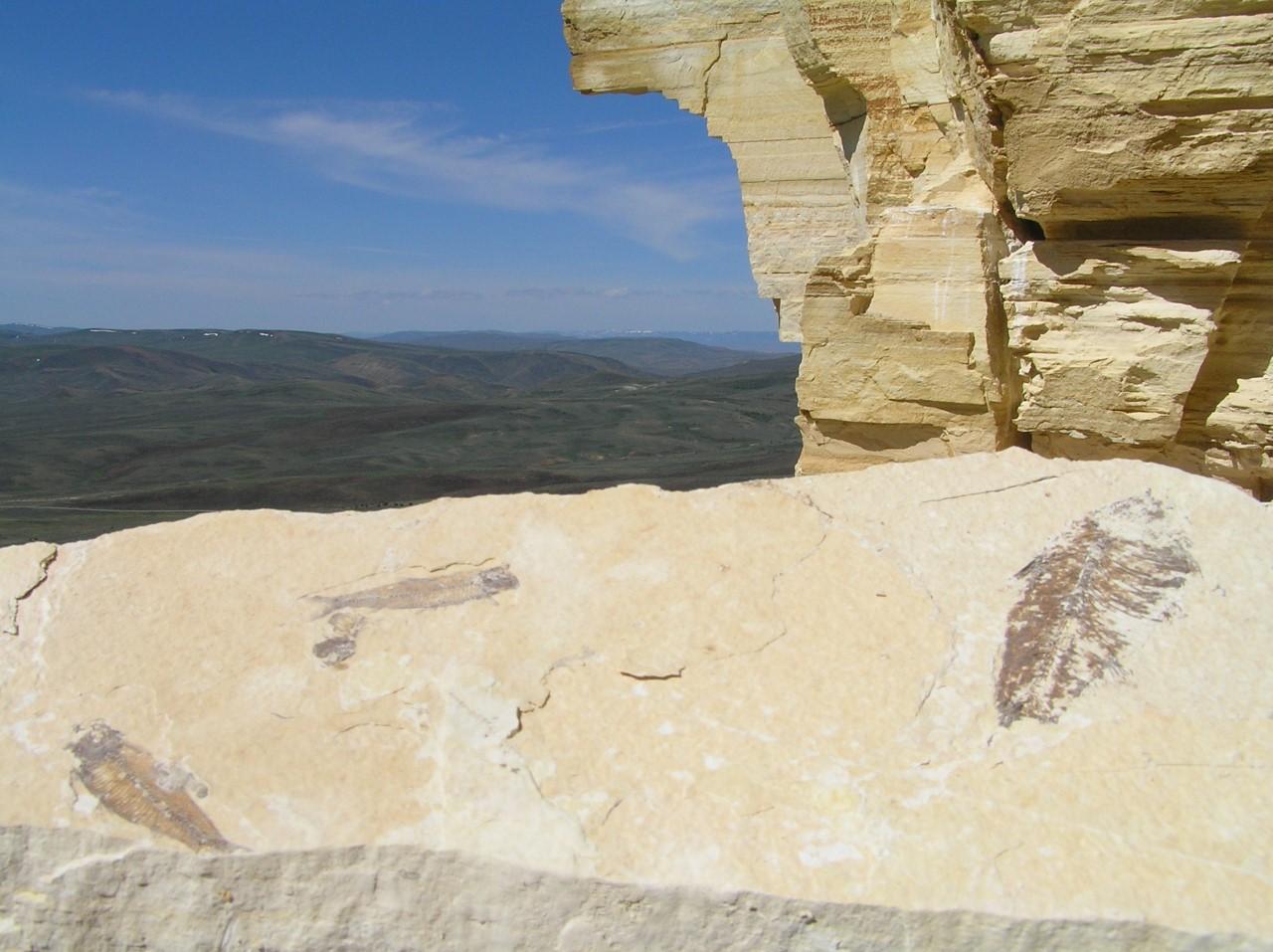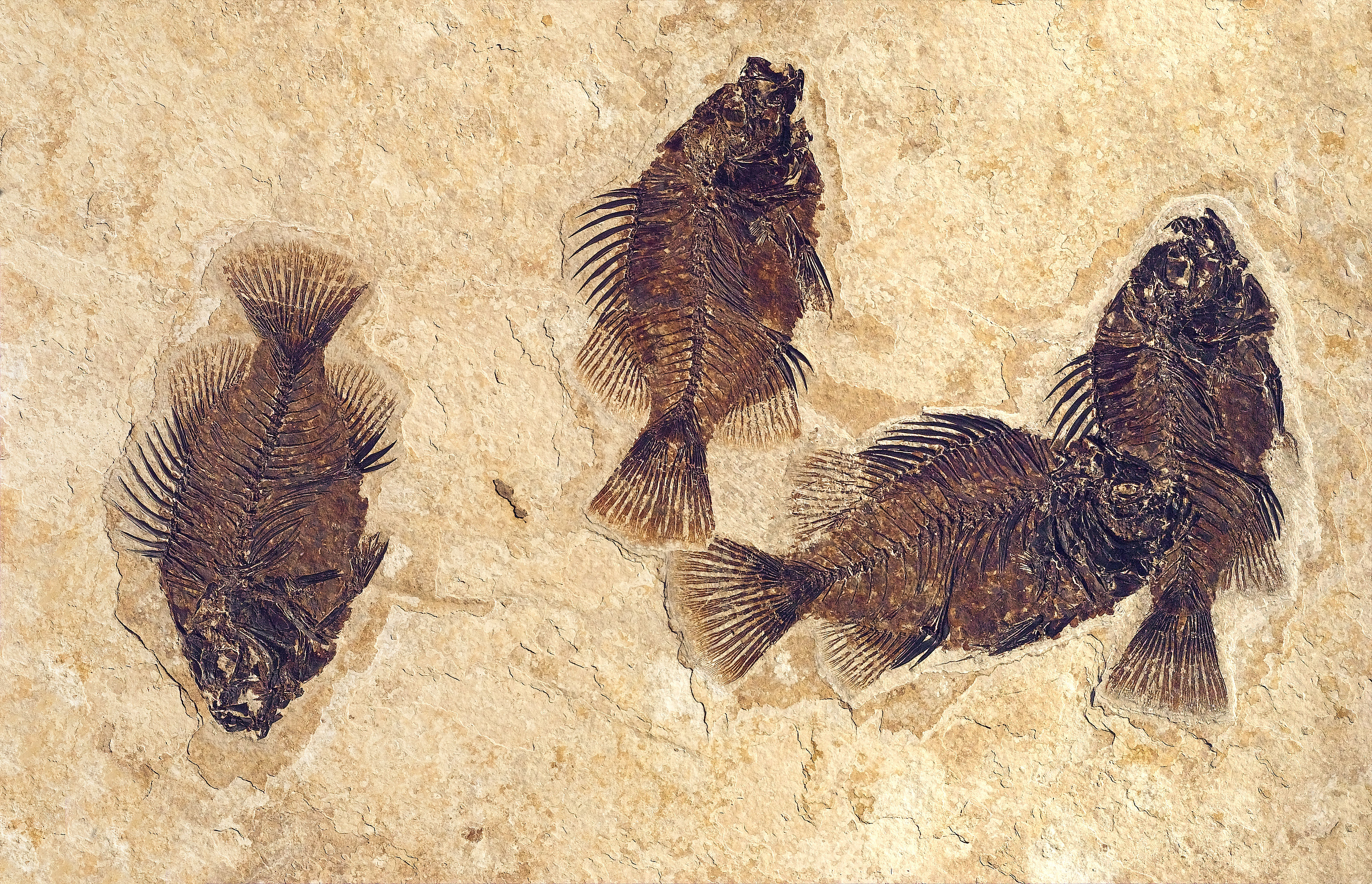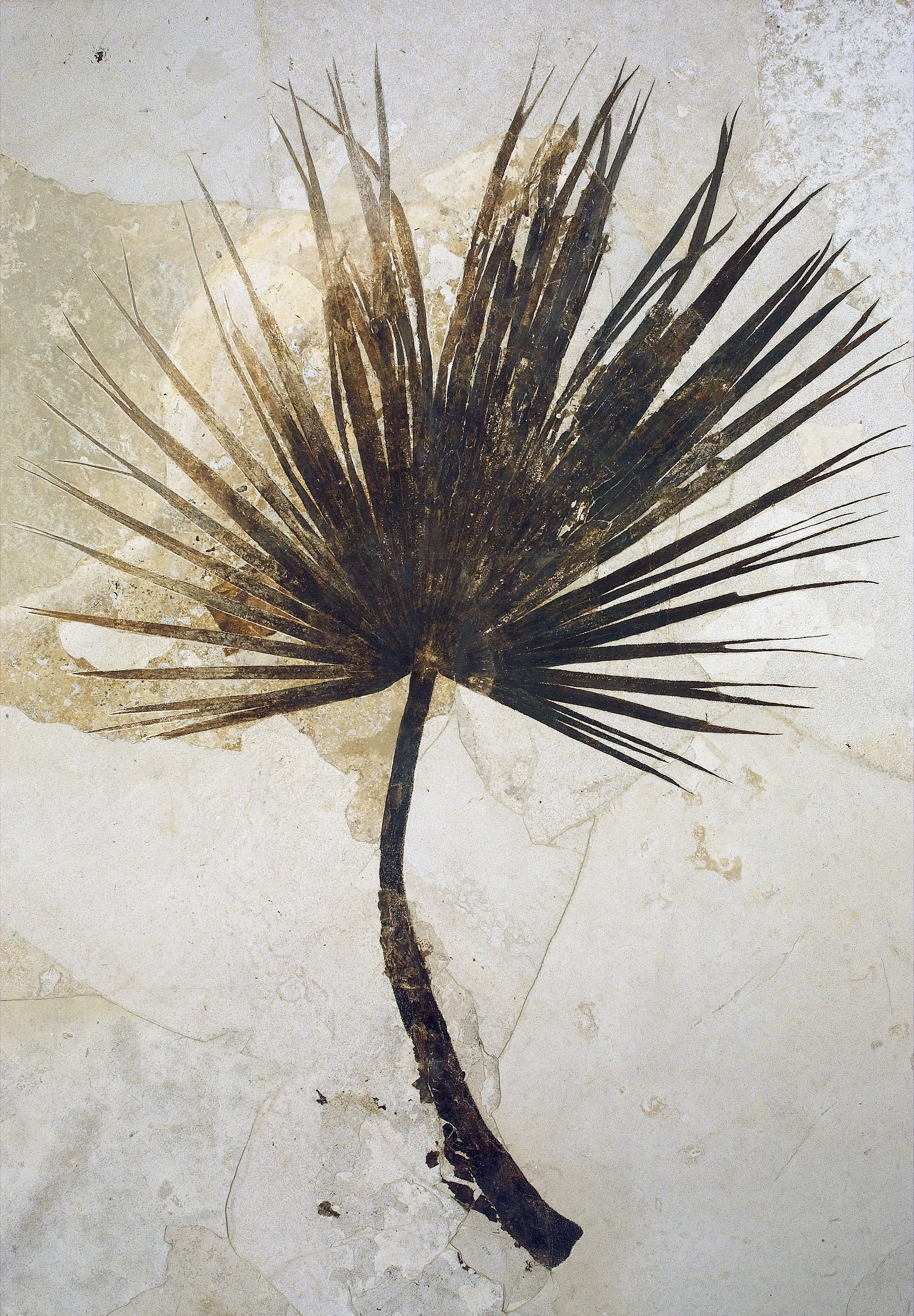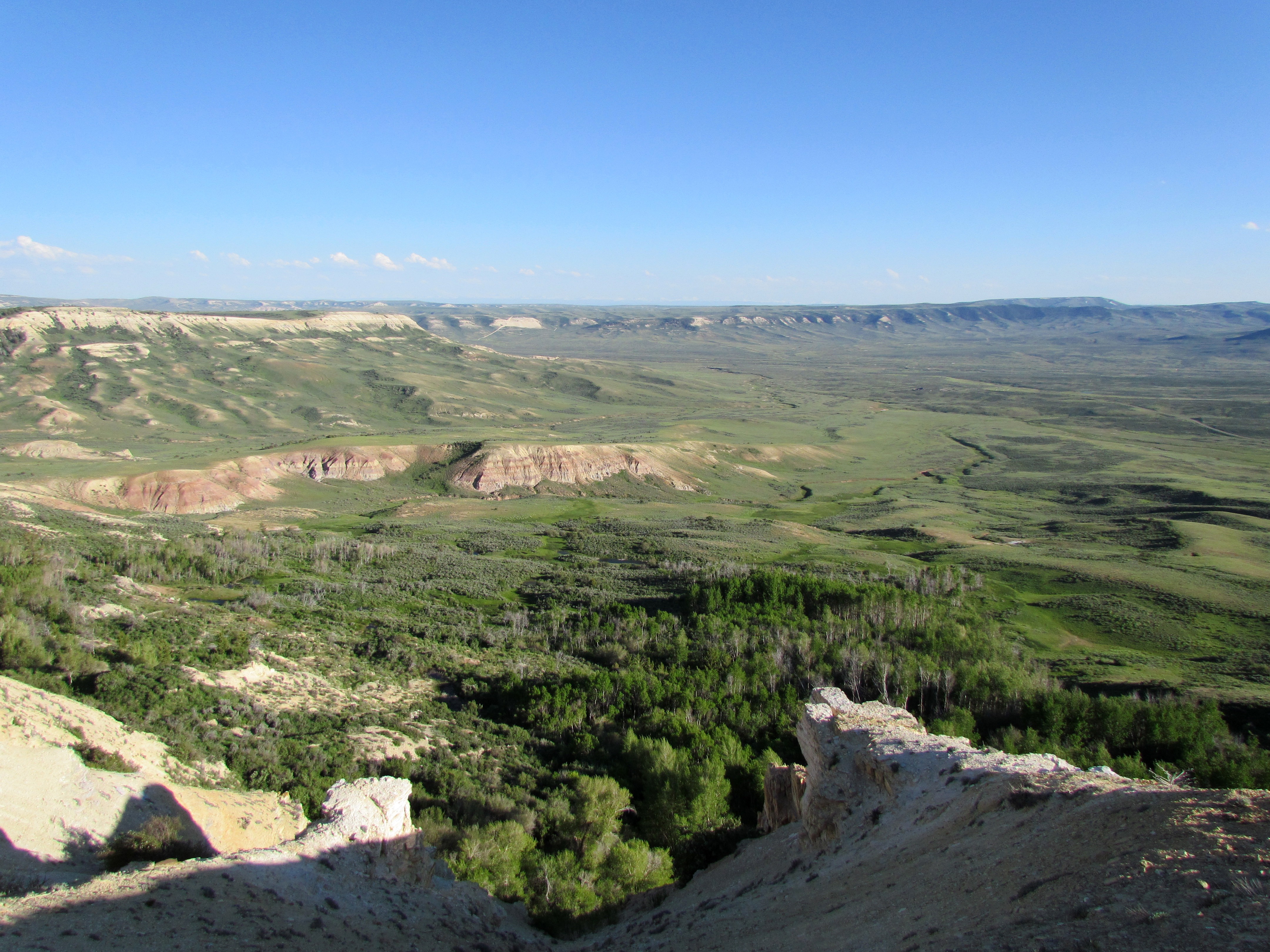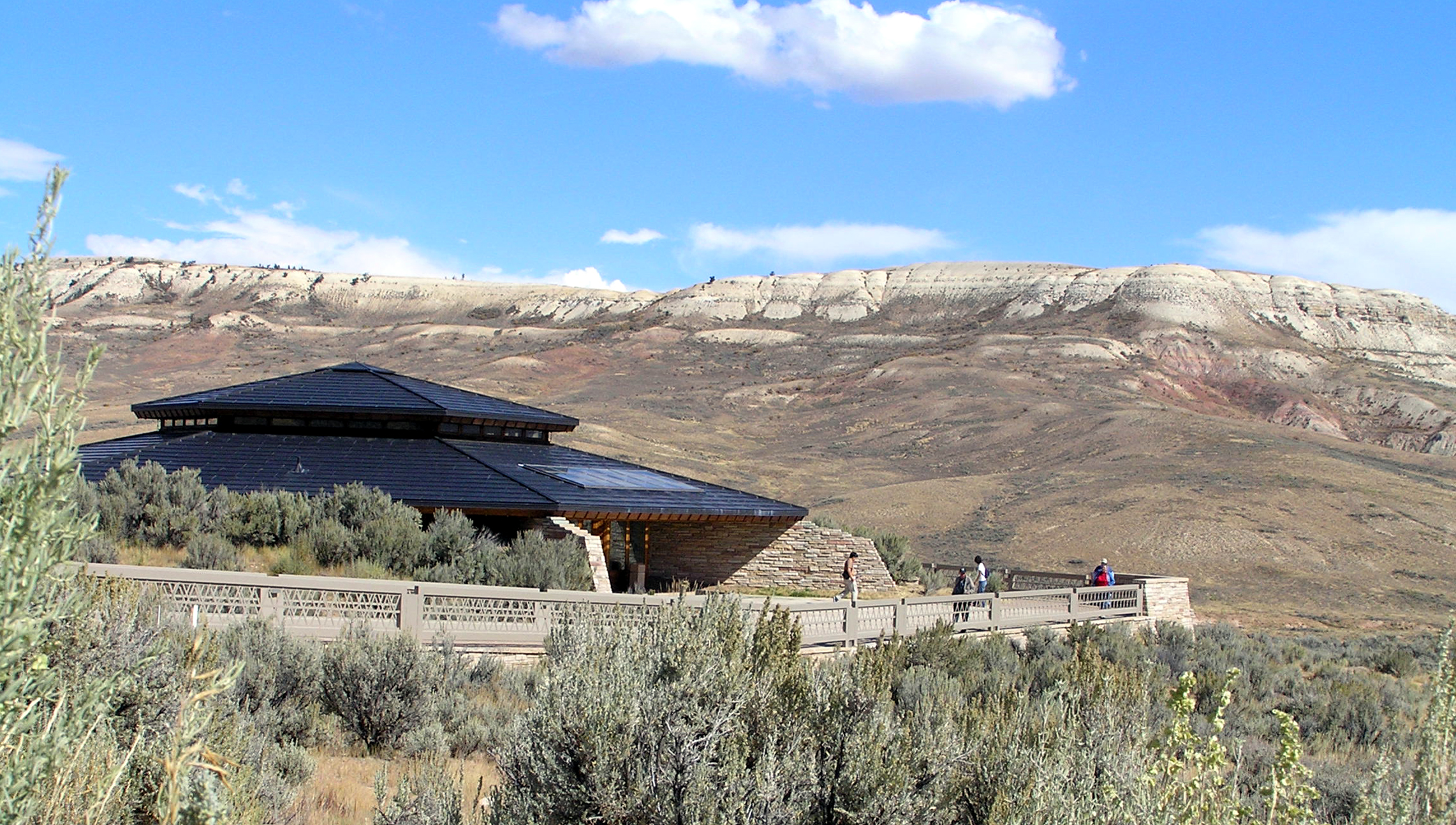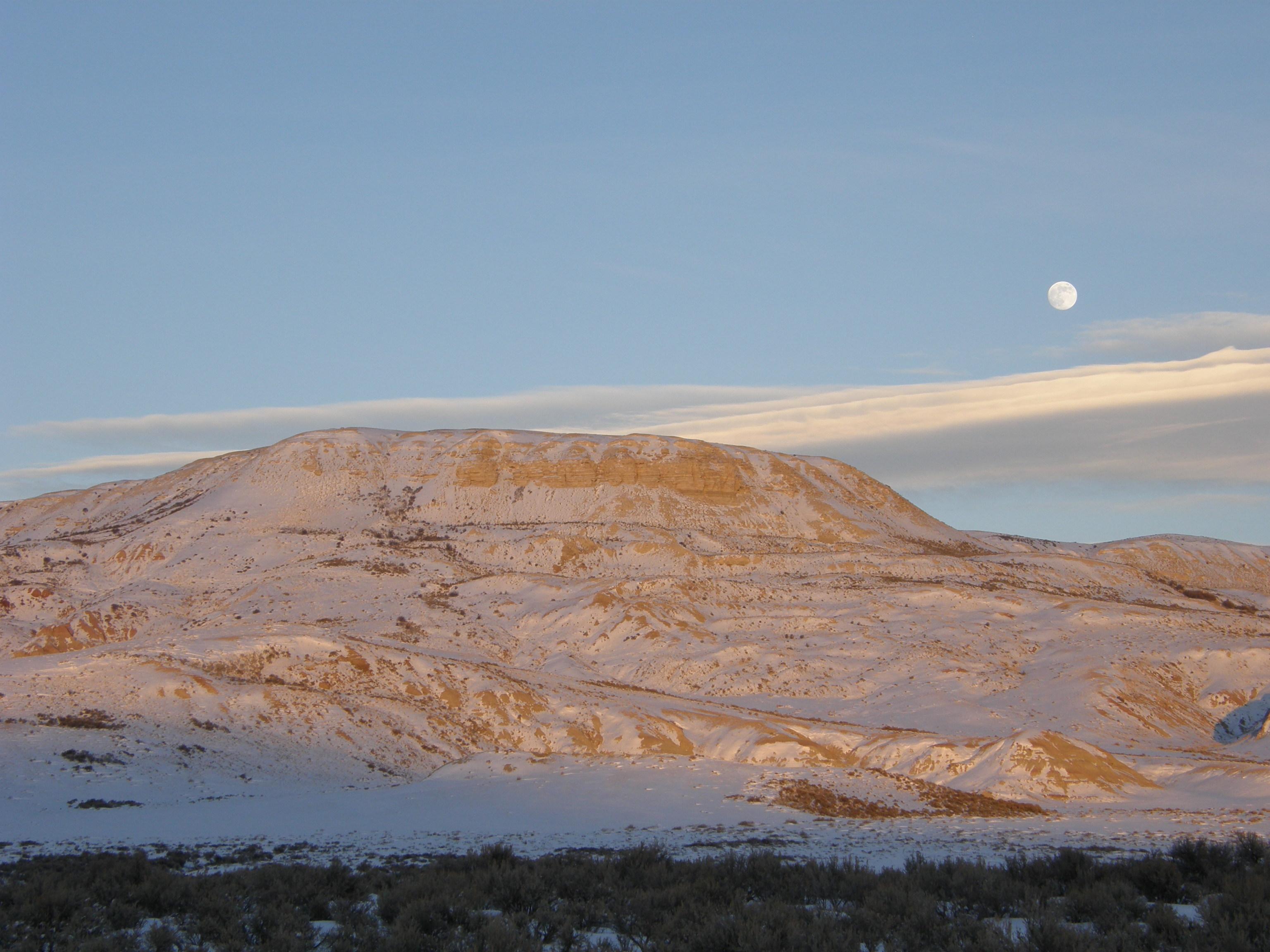In the ridges of southwest Wyoming are some of the best-preserved fossils in the world. They tell the story of ancient life in a warm, wet environment in and around a freshwater lake. Stingrays swam in the lake. Turtles basked in the sun. Leaves rustled in the breeze while early horses darted between the trunks. We reveal more of the past with each fossil found.
Fossils on the Ridge
Knightia eocaena, the most abundant vertebrate fossil in the world, lies exposed near cliff face.
Cockerellites liops, a Common Fossil Fish
Fossils from the Green River Formation are known for their excellent preservation, abundance, and diversity. Cockerellites liops is one of the common fishes found here.
Palm Frond
Fossil palm fronds and other plants indicate a climate similar to the Gulf Coast states.
The Limestone Ridges, Remnants of Ancient Fossil Lake, Contrast the Green, Early Summer Landscape.
Early Summer Beauty in the High Desert of Southwestern Wyoming
Visitor Center
The visitor center is nestled in a sagebrush landscape beneath Fossil Butte. Over 300 fossils are on exhibit.
Moonrise Over Fossil Butte
Fossil Butte is the most noticeable landmark of the park and where the monument got its name.
